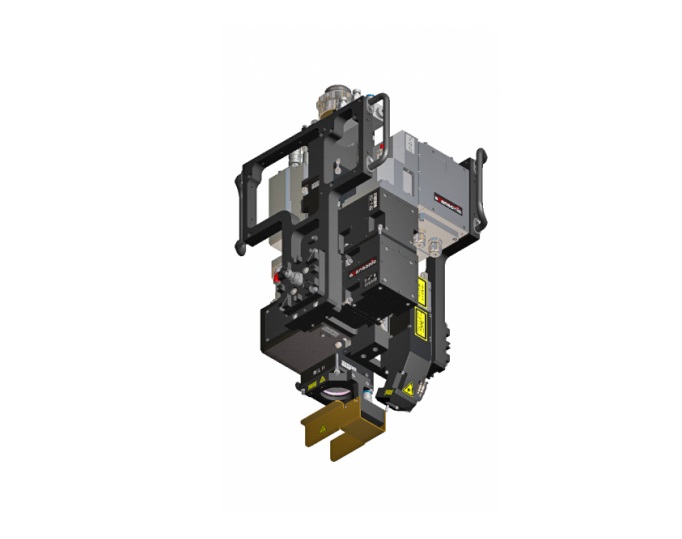Scansonic - Remote Laser Welding


Remote Laser welding is a Non contact type scanner based welding process .
In this process, the Laser beam is directed by a fast moving deflection mirror mechanism. This mirror mechanism focuses the beam on the workpiece and controls the path of welding of the beam. This increases the speed of operation.
In robotic Laser Welding, the speed of operation is limited by the speed of the robot movement.
Typically, when Robotic Laser Welding is done with fixed optics, the Robot movement time is much more than actual welding time.
Much of this time is eliminated by the RLW system, as the movement of deflection mirrors is much faster than movement of the robotic arm especially when the weld seam has complex geometry.
For applications where it is required to weld a complex geometry and the part is huge, a robotic arm is integrated with the Remote Laser Welding system. This combines the advantages of both the systems, the long reach of the robot and the ability of the RLW system to weld the complex shapes at higher speed. The robot travels along a smooth, straight path and the RLW head performs the task of directing the beam along the complex weld seam.
The Scansonic RLW – A system combines this Remote Laser Welding system with Optical Seam tracking technology. During the process, when the robot arm is moving over the desired path, the path of weld seam is tracked by the system and the scanner system is controlled accordingly. This facilitates the welding process with high precision and accuracy and makes remote welding process possible in complex applications like 3D body – in – white components.
APPLICATIONS OF RLW SYSTEM:
- High volume, intensive welding
- Automotive and Engineering Industries for door welding, car components welding, impact structure welding
- Welding Li-ion batteries
- It also has lot of applications in aerospace industry
ADVANTAGES:
- More productivity and flexibility of operation
- Fast process, can do 2 – 5 welds in one second
- Robot path accuracy is another factor which needs to be taken care of in fixed optics, but RLW-A does not require that.
- The working distance is longer which eliminates obstacles caused by clamping.
- With the Optical seam tracking, the need to teach the robot is eliminated, and the complex paths which cannot be welded by robot can be precisely and accurately welded
VERTICAL GAP BRIDGING:
When Laser Welding any type of component, the basic requirement is that there must be absolutely zero gap between the workpieces to be welded.
Otherwise, there may be a problem of air gaps and the resultant weld quality will be very poor, or worst case, there might not be any weld at all.
To maintain this zero gap condition, Component specific fixtures and clamping needs to be designed and manufactured which adds to costs, efforts and lead time.
With this new RLW A optics developed by Scansonic, actual gaps can be measured and compensated. Up to 0.7 to 1 mm gaps can be compensated by this advanced optics.
For more clarity on gap bridging, kindly refer to the video.
Product Details

Scansonic RLW - A
The RLW-A sets new standards in contactless fillet welding and enables overlap joints to be replaced by fillet welds. This reduces joint flanges and requires less laser energy for the same seam cross-section. The processing optics ensure precision, dynamics and reproducibility along with cost-effective operation.
